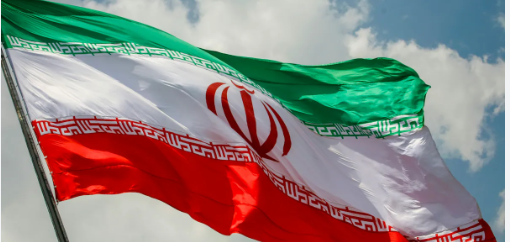In a landmark decision that has reverberated across Iran and the Middle East, Iran’s new President has announced the appointment of the country’s first Sunni governor in 45 years. This unprecedented move, hailed by some as a progressive step towards inclusivity, has raised discussions about Iran’s socio-political landscape, religious diversity, and the potential impact on the region’s sectarian dynamics. Iran, a predominantly Shia Muslim nation, has long been criticized for sidelining its Sunni minority in government positions. The appointment of a Sunni governor marks a significant shift in the country’s internal politics and could have far-reaching implications.
This article will delve into the significance of this appointment, the history of Sunni-Shia relations in Iran, the political motivations behind the decision, and what this means for the future of governance and religious harmony in the country.
The Historical Context: Sunni-Shia Divide in Iran
To fully appreciate the importance of Iran’s decision to appoint a Sunni governor, it is essential to understand the historical context of Sunni-Shia relations in the country. Iran, with approximately 90% of its population adhering to Shia Islam, is home to the largest Shia Muslim population in the world. Sunni Muslims, who make up about 5-10% of the population, are mostly concentrated in specific provinces such as Kurdistan, Sistan-Baluchestan, and Golestan.
Historically, the relationship between Iran’s ruling Shia elite and the Sunni minority has been fraught with tensions. Sunni Muslims in Iran have often felt marginalized, Iran’s New President with limited representation in government positions and other spheres of influence. Although Sunni Iranians have played vital roles in various social and economic sectors, their political representation has remained minimal, especially at the highest levels of governance.
Since the 1979 Islamic Revolution, which solidified Shia dominance in Iranian politics, Sunnis have been largely excluded from key government roles, particularly governorships and senior military or political appointments. The appointment of a Sunni governor, therefore, represents a break from this historical pattern and could signal a shift towards greater inclusivity in Iran’s political landscape.  For the more information click on this link
For the more information click on this link
Iran’s New President: A Shift Towards Inclusion?
Iran’s newly elected President has promised reforms aimed at fostering greater unity and inclusivity within the country. His rise to power came at a time when Iran is grappling with various domestic and international challenges, including economic hardship ,Iran’s New President regional instability, and diplomatic tensions. His rhetoric throughout his campaign often centered on national unity and addressing the grievances of minority groups within the country.
The appointment of a Sunni governor could be viewed as an attempt to deliver on these promises. By appointing a Sunni leader to a prominent position, the President may be signaling his intent to bridge sectarian divides and ensure that all Iranians, Iran’s New President regardless of religious affiliation, have a stake in the country’s governance. This gesture could also be aimed at appeasing the Sunni population, particularly in provinces where feelings of disenfranchisement have led to unrest and discontent in the past.
This move may also reflect the President’s desire to counter criticism from both domestic and international actors regarding Iran’s treatment of its religious minorities. Over the years, various human rights organizations and international bodies have highlighted the lack of political representation for Sunnis and other religious minorities in Iran. By appointing a Sunni governor, Iran’s New President the President may be attempting to enhance Iran’s image on the global stage while addressing a longstanding grievance.
Sunni Muslims in Iran: A Demographic Overview
Although Sunnis are a minority in Iran, they make up a significant portion of the population in certain regions. Provinces such as Kurdistan, Sistan- Baluchestan, and Golestan are home to large Sunni communities, many of whom have historically felt excluded from Iran’s political processes. These regions, which also tend to have higher rates of poverty and underdevelopment, have seen periodic bouts of unrest, with some groups demanding greater autonomy or political representation.
The appointment of a Sunni governor could be particularly significant for these provinces. It may be seen as a recognition of the unique cultural and religious identities of Sunni-majority areas and could be a step towards addressing the economic and social disparities that have long plagued these regions. Furthermore,Iran’s New President this appointment may serve as a means of curbing dissent and reducing tensions in provinces where Sunni grievances have occasionally led to protests and clashes with government forces.
The Significance of a Sunni Governor in Iran’s Political Structure
The role of a governor in Iran is a highly influential one. As the chief executive of a province, a governor is responsible for implementing government policies, overseeing economic development, and maintaining law and order. In provinces with large Sunni populations, the appointment of a Sunni governor is likely to be seen as a significant gesture of inclusivity and a sign that the government is willing to listen to the concerns of all its citizens, regardless of their sectarian affiliation.
However, the appointment of a Sunni governor also comes with its challenges. Iran’s political system is highly centralized, and while governors have authority within their respective provinces, they are still subject to the directives of the central government in Tehran. This means that any Sunni governor will need to navigate the delicate balance of representing the interests of his province’s Sunni population while adhering to the broader policies and guidelines set by the central, predominantly shia, government.
Potential Impacts on Sunni-Shia Relations in Iran
The appointment of a Sunni governor has the potential to improve Sunni-Shia relations in Iran, but it remains to be seen how this will play out in practice. Sunnis in Iran have long sought greater political representation and equal treatment under the law, Iran’s New President and this appointment could be viewed as a step in the right direction.
However, some observers remain cautious. The deep-rooted sectarian divide in Iran will not be bridged overnight, and the appointment of a single Sunni governor may not be enough to address the larger structural inequalities that Sunnis face. While this decision is a positive gesture, Iran’s New Presidentit is only one step on the long road toward achieving true inclusivity and religious harmony in the country.
Moreover, the Sunni governor will need to prove that his appointment is not merely symbolic but that he has real authority to effect change in his province. If the governor is perceived as a puppet of the central government, his appointment could be met with skepticism by Sunni communities. To truly make a difference, the Iran’s New President governor will need to work towards addressing the unique needs of his province, Iran’s New President whether in terms of economic development, infrastructure, or social services.  For the more information click on this link
For the more information click on this link
Regional and International Reactions
The appointment of Iran’s first Sunni governor in 45 years is likely to attract significant attention from the international community, particularly from Sunni-majority countries in the Middle East. Iran’s relations with Sunni-majority states, particularly Saudi Arabia ,Iran’s New President have often been strained due to sectarian tensions and competing geopolitical interests. The appointment of a Sunni governor could be viewed as a positive step by these countries, signaling Iran’s willingness to foster greater inclusivity and reduce sectarianism within its borders.
At the same time, the decision could also be seen as a strategic move by Iran to improve its relations with its Sunni neighbors, particularly in light of ongoing conflicts in the region. By promoting greater inclusivity at home, Iran’s New President may be attempting to send a message that it is committed to fostering religious harmony and reducing sectarian tensions, both within its own borders and across the broader Middle East.
However, some regional actors may view this move with suspicion, interpreting it as a public relations effort rather than a genuine commitment to change. Iran’s history of Shia-dominated governance and its role in supporting Shia militias and governments in countries like Iraq, Syria, Iran’s New President and Lebanon may lead some to question whether this appointment represents a real shift in the country’s approach to sectarian politics.
Challenges Ahead: The Road to Inclusivity
While the appointment of a Sunni governor is a positive step, it is only the beginning of the journey toward greater inclusivity in Iran. For true progress to be made, the government will need to address the systemic issues that have marginalized Sunnis and other religious minorities for decades. This includes ensuring equal access to education, employment opportunities, and political representation, as well as tackling economic disparities in Sunni-majority provinces.
Moreover, the new Sunni governor will need to be given the resources and support necessary to effectively govern his province and address the needs of its people. If his role is purely symbolic or if he is hampered by bureaucratic obstacles, the appointment could backfire, leading to further disillusionment among Iran’s Sunni population.
Conclusion: A Step Towards a More Inclusive Iran?
The appointment of Iran’s first Sunni governor in 45 years is a historic and significant move that has the potential to reshape the country’s socio-political landscape. It signals a willingness on the part of the new President to promote greater inclusivity and address the longstanding grievances of Iran’s Sunni population. However, Iran’s New President the true impact of this decision will depend on how it is implemented and whether it leads to meaningful change for Sunni Muslims in Iran.
While the appointment is a positive step, it must be followed by broader reforms aimed at ensuring equality for all of Iran’s religious and ethnic groups. Only then can Iran move towards becoming a more inclusive and unified nation, where all citizens, regardless of their religious affiliation, have a voice in the country’s future. ALSO READ:- Google Photos Introduces New ‘Ultra HDR’ and Flipping Features for Enhanced Editing Experience 2024




